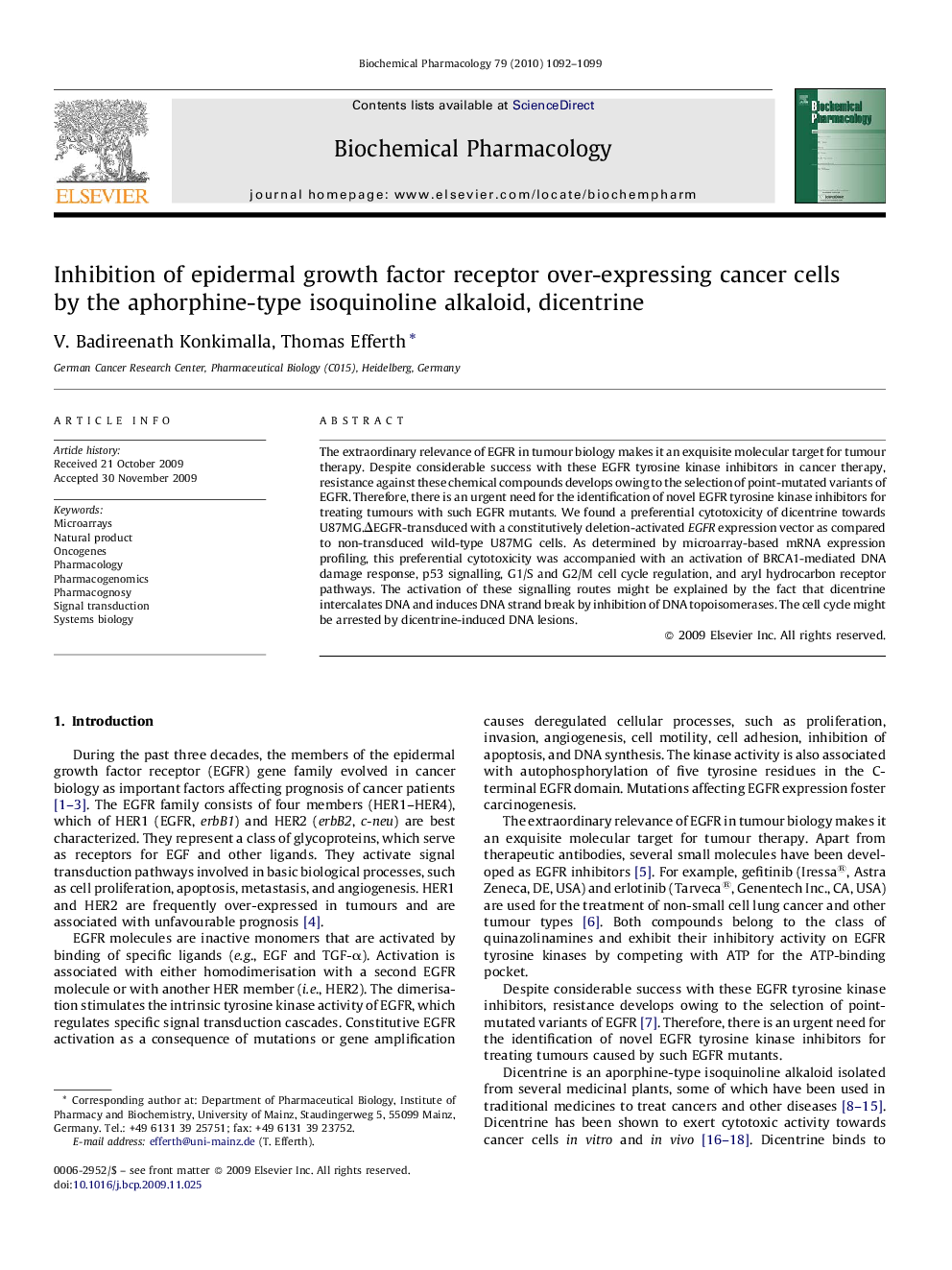| Article ID | Journal | Published Year | Pages | File Type |
|---|---|---|---|---|
| 2513534 | Biochemical Pharmacology | 2010 | 8 Pages |
The extraordinary relevance of EGFR in tumour biology makes it an exquisite molecular target for tumour therapy. Despite considerable success with these EGFR tyrosine kinase inhibitors in cancer therapy, resistance against these chemical compounds develops owing to the selection of point-mutated variants of EGFR. Therefore, there is an urgent need for the identification of novel EGFR tyrosine kinase inhibitors for treating tumours with such EGFR mutants. We found a preferential cytotoxicity of dicentrine towards U87MG.ΔEGFR-transduced with a constitutively deletion-activated EGFR expression vector as compared to non-transduced wild-type U87MG cells. As determined by microarray-based mRNA expression profiling, this preferential cytotoxicity was accompanied with an activation of BRCA1-mediated DNA damage response, p53 signalling, G1/S and G2/M cell cycle regulation, and aryl hydrocarbon receptor pathways. The activation of these signalling routes might be explained by the fact that dicentrine intercalates DNA and induces DNA strand break by inhibition of DNA topoisomerases. The cell cycle might be arrested by dicentrine-induced DNA lesions.
Graphical abstractDicentrine exerts preferential cytotoxicity towards EGFR-transfectant U87MG cells. As determined by microarray hybridisations, this was accompanied by activation of BRCA1, p53, AhR signalling and G1/S and G2/M cell cycle regulation.Figure optionsDownload full-size imageDownload as PowerPoint slide
